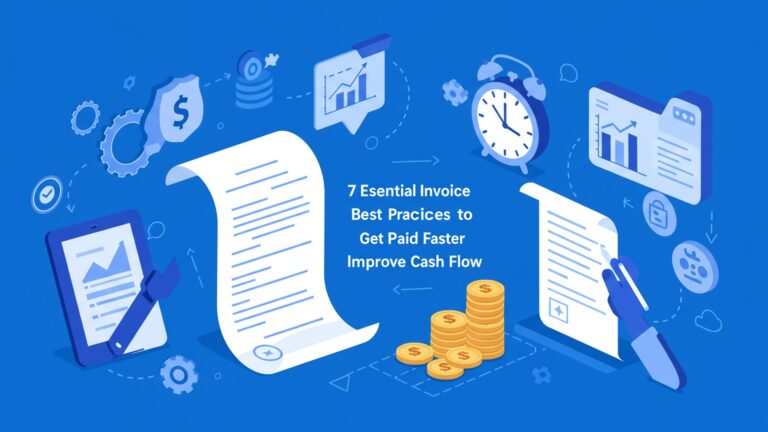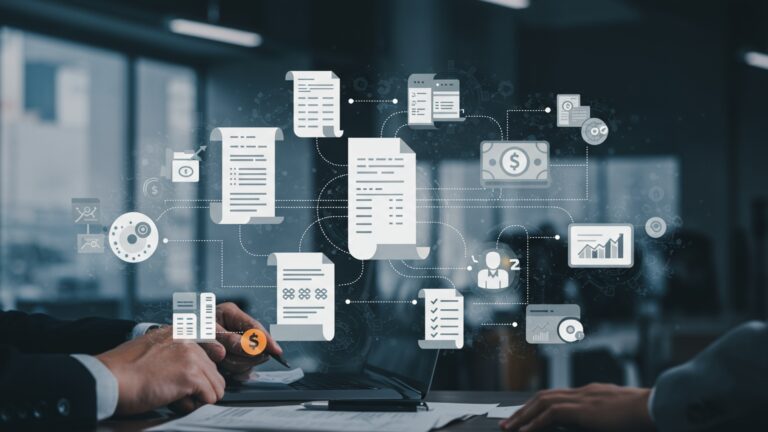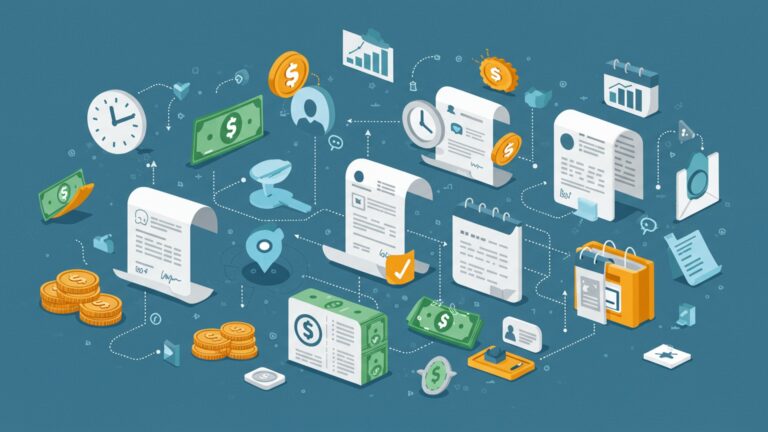Master These 10 Invoice Best Practices to Ensure Faster Payments
Delayed payments consistently strain business cash flow, yet the solution for accelerating revenue often begins with the invoice itself. Mastering invoice best practices transforms a mere billing document into a strategic asset for financial efficiency. In today’s rapidly evolving digital economy, where e-invoicing mandates are increasingly prevalent across regions and automation drives payment processing, a meticulously structured invoice is more critical than ever. For instance, clear payment terms, accurate line items. compliant data standards, often underestimated, directly impact a client’s ability to process and approve payments swiftly. Businesses that proactively embrace these modern invoicing principles not only streamline operations but also significantly reduce their Days Sales Outstanding, directly bolstering their financial health in a competitive landscape.

1. Ensure Crystal-Clear, Comprehensive Invoices
One of the most fundamental invoice best practices for securing faster payments is to make your invoices unequivocally clear and complete. Ambiguity is the enemy of prompt payment. When a client receives an invoice that is difficult to comprehend or missing crucial data, it inevitably leads to queries, delays. frustration.
- What to Include: Every invoice should act as a self-contained payment request, leaving no room for guesswork. Essential elements typically include:
- Your business name and contact details.
- The client’s business name and contact details.
- A unique invoice number (for tracking).
- The date of issue.
- The due date for payment.
- An itemized list of services rendered or products sold, including descriptions, quantities. unit prices.
- Any applicable taxes or discounts.
- The total amount due.
- Clear payment instructions (bank details, payment gateway links, etc.) .
- Real-World Application: Imagine you’re a freelance graphic designer. Instead of simply stating “Website Design – $2000,” a clear invoice would detail “Discovery Phase (5 hrs @ $100/hr) – $500,” “Wireframing & UI Mockups (10 hrs @ $100/hr) – $1000,” “Asset Creation (5 hrs @ $100/hr) – $500.” This transparency helps the client comprehend exactly what they’re paying for, reducing the likelihood of disputes.
- Actionable Takeaway: Before sending any invoice, double-check it as if you were the client. Does it answer every potential question? Is it easy to follow? Utilize templates to ensure consistency and completeness.
2. Issue Invoices Promptly and Consistently
Timing is everything when it comes to cash flow. Delaying the issuance of an invoice directly delays your payment. It’s a simple equation: the sooner the client receives the invoice, the sooner they can process it and send payment. This is a critical component of effective invoice best practices.
- Why it Matters:
- Fresh in Mind: When an invoice is sent immediately after a service is completed or a product is delivered, the work is still fresh in the client’s mind. They are more likely to acknowledge and process it quickly.
- Avoid Backlog: Waiting to send invoices can create a backlog for you and your client. If a client receives multiple invoices at once, it might take them longer to sort through and prioritize payments.
- Predictable Cash Flow: Consistent invoicing helps you predict your incoming cash flow more accurately, which is vital for business planning.
- Real-World Application: A marketing agency that sends an invoice immediately after a campaign concludes, rather than waiting until the end of the month, often sees payment within their specified terms. Conversely, an agency that waits might find their invoice gets lumped into a larger batch of end-of-month bills, prolonging payment.
- Actionable Takeaway: Make invoicing a non-negotiable part of your project completion or delivery workflow. Set a reminder or integrate it into your project management system. Tools that allow you to generate an invoice with a few clicks immediately after marking a task as complete can be incredibly beneficial.
3. Clearly Define and Communicate Payment Terms
Vague payment terms are a common pitfall that can significantly delay payments. One of the most crucial invoice best practices is to explicitly state your payment terms on every invoice and ensure they are understood by your clients upfront, ideally within your initial contract or agreement.
- Key Terms Explained:
- Net 30: Payment is due 30 days from the invoice date. Other common terms include Net 15, Net 45, or Net 60.
- Due Upon Receipt: Payment is expected as soon as the invoice is received. While seemingly straightforward, this can sometimes be impractical for businesses with internal processing cycles.
- Payment in Advance (PIA): Payment is required before any work begins or goods are delivered.
- Payment on Delivery (POD): Payment is due when the product or service is delivered.
- Why Clarity is Crucial: Without clearly defined terms, clients might assume a longer payment window than you intend, or simply prioritize other invoices with explicit due dates. This can lead to your invoice being pushed to the bottom of the pile.
- Real-World Application: A small business owner previously used “Payment Due” on their invoices. After switching to “Net 15 – Payment Due by [Specific Date],” they noticed a significant reduction in the average payment time, as clients now had a concrete deadline to work towards.
- Actionable Takeaway: Always include specific payment terms, such as “Payment Due: Net 30,” followed by the exact due date. Discuss these terms with new clients during onboarding and include them in your service agreements or contracts to prevent any surprises.
4. Offer Diverse and Convenient Payment Options
Making it effortless for your clients to pay is a cornerstone of effective invoice best practices. If the process is cumbersome or limited, clients might delay payment simply because their preferred method isn’t available or the process is too complicated.
- Common Payment Methods:
- Bank Transfers (ACH/Wire): Often preferred for larger sums. can sometimes involve manual steps for the client.
- Credit/Debit Cards: Highly convenient, especially for smaller to medium amounts. Many online payment gateways facilitate this.
- Online Payment Gateways (e. g. , PayPal, Stripe, Square): Offer a seamless, secure way for clients to pay directly from the invoice via a link, often supporting various card types and digital wallets.
- Digital Wallets (e. g. , Apple Pay, Google Pay): Increasingly popular for mobile payments.
- Checks: While declining in popularity, some businesses still prefer this method, especially older or larger corporations.
- Comparison of Methods:
Payment Method Pros Cons Bank Transfer Low transaction fees, suitable for large sums. Manual process for client, slower reconciliation, potential for errors. Credit/Debit Card Highly convenient, instant payment confirmation. Higher transaction fees (typically 1. 5-3. 5%), PCI compliance needs. Online Payment Gateways Very convenient, secure, automated reconciliation, multiple payment options. Transaction fees, platform dependency. Checks No transaction fees for sender, traditional for some. Slowest method, risk of postal delays, manual deposit and reconciliation. - Real-World Application: A web development freelancer who used to only accept bank transfers found their payment times shortened considerably after integrating a Stripe payment link directly into their invoices, allowing clients to pay with a credit card instantly.
- Actionable Takeaway: Research and implement at least two to three diverse payment options that cater to your client base. Clearly display these options on your invoice, ideally with direct links for online payments.
5. Implement a Strategic Follow-Up System
Even with perfectly crafted invoices, sometimes payments get delayed. A professional and systematic follow-up process is a crucial element of effective invoice best practices. It’s not about being aggressive. about being persistent and helpful.
- Recommended Follow-Up Cadence:
- Pre-Due Date Reminder (3-5 days before): A gentle email reminding the client of the upcoming due date and attaching the invoice again. This serves as a helpful nudge and allows them to clarify any issues before the deadline.
- On Due Date Reminder: A polite message stating the payment is due today.
- Post-Due Date Reminder (1-3 days after): A friendly email noting that the payment appears to be overdue, offering assistance. re-attaching the invoice.
- Subsequent Reminders (weekly/bi-weekly): If payment remains outstanding, escalate the tone slightly, referencing previous communications. outlining potential late fees or service interruptions if applicable (as per your terms).
- Why it Works: Many payment delays are due to oversight, not malice. A well-timed reminder can bring your invoice to the top of their priority list. It also shows you are organized and serious about your payment terms.
- Real-World Application: A consulting firm implemented an automated email system that sent a reminder three days before an invoice was due. They observed a 40% reduction in invoices going past their due date within the first quarter of implementation.
- Actionable Takeaway: Use invoicing software that can automate these reminders, or set up a manual calendar system. Always maintain a professional and helpful tone, even when chasing overdue payments.
6. Leverage Invoice Automation Software
For businesses of all sizes, manual invoicing can be a time sink and prone to errors. Embracing automation is one of the most impactful invoice best practices, transforming your invoicing process from a chore into a streamlined operation that significantly boosts payment speed.
- What Invoice Automation Software Does: These platforms automate various aspects of the invoicing lifecycle.
- Automated Invoice Creation: Generate invoices based on pre-set templates, project data, or recurring billing schedules.
- Scheduled Sending: Automatically email invoices to clients on specific dates.
- Payment Reminders: Send automated follow-up emails before and after due dates.
- Payment Tracking: Monitor the status of each invoice (sent, viewed, paid, overdue).
- Integration: Often integrates with accounting software, payment gateways. CRM systems for a holistic financial view.
- Reporting: Provides insights into payment trends, overdue invoices. cash flow.
- Benefits for Faster Payments:
- Increased Accuracy: Reduces human error in calculations and data entry, preventing disputes.
- Improved Efficiency: Frees up valuable time, allowing you to focus on core business activities.
- Timeliness: Ensures invoices are sent out immediately, without manual delays.
- Consistent Follow-Up: Guarantees reminders are sent on schedule, without you having to remember each one.
- Real-World Application: A growing e-commerce business struggled with manual invoicing and chasing payments. After adopting a platform like Xero, they automated recurring invoices for their subscription service and follow-up reminders. This not only saved them 10 hours a week but also reduced their average payment collection time by 7 days.
- Actionable Takeaway: Explore popular invoicing and accounting software solutions such as QuickBooks, Xero, FreshBooks, or Zoho Books. Many offer free trials, allowing you to assess which best fits your business needs and helps implement these key invoice best practices.
7. Maintain Professionalism and Accuracy
Your invoice is often a direct reflection of your business’s professionalism. An invoice that is riddled with errors, poorly formatted, or lacks branding can undermine trust and signal a lack of attention to detail, potentially leading to payment delays. Adhering to professional standards is a critical aspect of invoice best practices.
- Elements of Professionalism:
- Error-Free Content: Double-check all figures, dates, client details. item descriptions. Even a small typo can cause a client to pause and question the entire invoice.
- Consistent Branding: Use your company logo, consistent fonts. a professional layout. This reinforces your brand identity and makes the invoice instantly recognizable.
- Clear Formatting: Ensure the invoice is easy to read. Use appropriate font sizes, bolding for key details. sufficient white space.
- Polite Language: Maintain a professional and courteous tone in all communication related to invoicing.
- Why Accuracy Builds Trust: When clients receive an accurate, professional invoice, they perceive your business as reliable and trustworthy. This can foster a positive relationship that prioritizes timely payments. Conversely, repeated errors might make a client wary or give them an excuse to delay payment while they “verify” the details.
- Real-World Application: A boutique design agency always sends out beautifully designed, branded invoices that match their portfolio. Clients often comment on the professionalism. the agency rarely experiences payment issues, attributing it partly to the perceived quality and care evident in all their communications, including invoices.
- Actionable Takeaway: Create a standardized invoice template using your branding. Before sending any invoice, proofread it meticulously, or better yet, have a second pair of eyes review it for accuracy and clarity.
8. Proactively Address and Resolve Disputes
Sometimes, payment delays stem not from negligence. from a genuine dispute or misunderstanding regarding the invoice or the services rendered. Ignoring or delaying the resolution of these issues is counterproductive. Proactive dispute resolution is a pivotal part of effective invoice best practices.
- Why Disputes Delay Payment: If a client believes there’s an error in the charges, a discrepancy in the service delivered, or simply needs clarification, they will almost certainly withhold payment until the issue is resolved. An unresolved dispute is a guaranteed payment blocker.
- Steps for Proactive Resolution:
- Open Communication Channels: Make it easy for clients to ask questions or raise concerns about an invoice. Provide a direct contact person or email for billing inquiries.
- Listen Actively: When a client raises an issue, listen to their concerns without immediately becoming defensive. Try to grasp their perspective.
- Investigate Promptly: Look into the issue as quickly as possible. Was there a misunderstanding? An actual error on your part? A scope creep that wasn’t properly communicated?
- Propose Solutions: Be prepared to offer a fair resolution, which might include an adjustment to the invoice, a credit, or a clear explanation that addresses their concerns.
- Document Everything: Keep records of all communications and agreements made during the dispute resolution process.
- Real-World Application: A software developer received an invoice query from a client who felt a particular feature wasn’t fully delivered. Instead of arguing, the developer immediately scheduled a call, reviewed the project scope. demonstrated how the feature met the original specifications. The client understood. the payment was processed that same day.
- Actionable Takeaway: Treat every invoice query as an opportunity to reinforce client trust. Respond to disputes quickly, professionally. with a focus on finding a mutually agreeable solution. This often means providing clear documentation or explanations rather than just adjusting the bill.
9. Consider Early Payment Incentives or Late Fees
While not suitable for every business model, strategically using incentives for early payment or applying late fees can be powerful invoice best practices to encourage prompt settlement of invoices. These tools create a financial nudge that can accelerate payment cycles.
- Early Payment Discounts:
- How it Works: Offer a small discount (e. g. , 1-2%) if the invoice is paid within a shorter timeframe than the standard terms. A common notation is “2% 10, Net 30,” meaning a 2% discount if paid within 10 days, otherwise the full amount is due in 30 days.
- Pros: Motivates clients to pay quickly, especially those who manage their cash flow tightly. Can significantly reduce your average collection period.
- Cons: Reduces your overall revenue slightly. Needs careful calculation to ensure profitability.
- Late Payment Fees:
- How it Works: Stipulate a penalty for payments received after the due date. This can be a fixed amount or a percentage of the outstanding balance, often compounded monthly.
- Pros: Acts as a deterrent against late payments. Can compensate for the administrative burden and cash flow impact of overdue invoices.
- Cons: Can sometimes strain client relationships if not clearly communicated and enforced fairly. Requires careful legal consideration in some jurisdictions.
- Real-World Application: A B2B supplier implemented a “1% 7, Net 30” policy. Many of their corporate clients, eager to save even a small percentage on large orders, began paying within 7 days, significantly improving the supplier’s cash flow.
- Actionable Takeaway: Carefully assess if early payment incentives or late fees align with your business model and client relationships. If you decide to implement them, clearly state these terms on your contracts and invoices, ensuring legal compliance.
10. Cultivate Strong Client Relationships
Beyond the transactional elements, the human aspect plays a surprisingly significant role in payment speed. Building and maintaining strong, positive relationships with your clients is one of the most underrated yet effective invoice best practices for ensuring faster payments.
- How Relationships Influence Payments:
- Priority: Clients are more likely to prioritize paying vendors they value, trust. have a good rapport with. You become more than just another bill.
- Open Communication: A strong relationship fosters open communication. If a client faces a temporary cash flow issue, they are more likely to inform you in advance, allowing you to discuss alternative arrangements rather than leaving you in the dark.
- Trust: Trust cultivated through good service and communication translates to trust in your billing. They’ll be less likely to scrutinize every line item unnecessarily.
- Strategies for Building Strong Relationships:
- Excellent Service: Consistently deliver high-quality work or products.
- Clear Communication: Be transparent about project progress, potential challenges. expectations.
- Responsiveness: Reply promptly to client inquiries and concerns, even those not directly related to billing.
- Personalization: Treat clients as individuals, understanding their specific needs and preferences.
- Go the Extra Mile: Occasionally offer value beyond the strict scope of work, demonstrating your commitment.
- Real-World Application: A freelance copywriter made it a point to regularly check in with clients, offer insights. provide quick turnaround times. When an unexpected personal emergency arose for one client, leading to a slight payment delay, the client proactively informed the copywriter and apologized, ensuring payment as soon as they were able, largely due to the established positive relationship.
- Actionable Takeaway: View every interaction with your client as an opportunity to strengthen your relationship. Exceptional service, clear communication. a genuine interest in their success will not only foster loyalty but also make them more inclined to ensure your invoices are paid on time.
Conclusion
Mastering these invoice best practices isn’t just about sending a bill; it’s about proactively managing your cash flow and solidifying client relationships. I’ve personally found that the clearest invoices, especially those leveraging current trends like integrated digital payment portals or QR codes for instant transactions, significantly reduce payment cycles. It’s a game-changer when a client can pay you directly from the invoice link, as many modern accounting systems now offer, rather than navigating multiple steps. My personal tip is to treat your invoice as the final, critical step in your service delivery. Ensure payment terms are prominently displayed – I once had a client delay payment simply because they couldn’t quickly locate the due date. By implementing these actionable strategies, you empower your business to thrive with consistent cash flow, transforming a routine task into a strategic advantage. For deeper insights into maintaining healthy finances, explore 7 Effective Strategies to Avoid Late Payments and Improve Your Cash Flow.
More Articles
Learn 9 Practical Strategies to Streamline Billing Process and Boost Business Efficiency
How to Master Billing and POS Software for Efficient Retail Management
Master 8 Ways Restaurant Billing Software Boosts Indian Business
How to Streamline Billing and POS Software for Efficient Sales and Inventory Management
7 Effective Strategies to Avoid Late Payments and Improve Your Cash Flow
FAQs
Why should I bother with special invoice practices?
Focusing on invoice best practices helps you get paid quicker, reduces payment delays. significantly improves your cash flow. It also makes the payment process smoother and more professional for your clients, building better relationships.
What’s the most crucial data to include on an invoice?
Accuracy and completeness are paramount. Ensure all details like service descriptions, quantities, rates, dates. both your and your client’s full contact insights are correct and clearly stated. Missing or incorrect info is a common reason for payment delays.
Is it better to send invoices immediately or wait a bit?
Definitely send them promptly! The sooner your client receives an accurate invoice, the sooner they can process it. Don’t let completed work sit around without being billed – that’s just delaying your own payment and making cash flow management harder.
How can I make it super easy for clients to pay me?
Clearly state your payment terms (like ‘Net 30’ or ‘Due on Receipt’) and the exact due date. Also, offer a variety of convenient payment methods – bank transfer, credit card, online payment platforms – to remove any potential hurdles for your client.
My clients are often late, what can I do besides just waiting?
A polite and timely follow-up system is crucial. Sometimes clients just need a gentle reminder. For recurring issues, consider offering small incentives for early payment or clearly outlining and applying late payment fees as agreed upon in your terms.
Does the look of my invoice really impact how fast I get paid?
Yes, absolutely! A professional, well-organized. branded invoice instills confidence and shows you’re serious about your business. It makes the invoice feel legitimate and essential, encouraging quicker processing compared to a messy or unclear document.
What if a client disputes something on the invoice?
Quick and clear communication is best. Have a process for addressing discrepancies or questions promptly. The faster you resolve any issues, the faster the payment process can resume. Delays in communication often lead to delays in payment.






